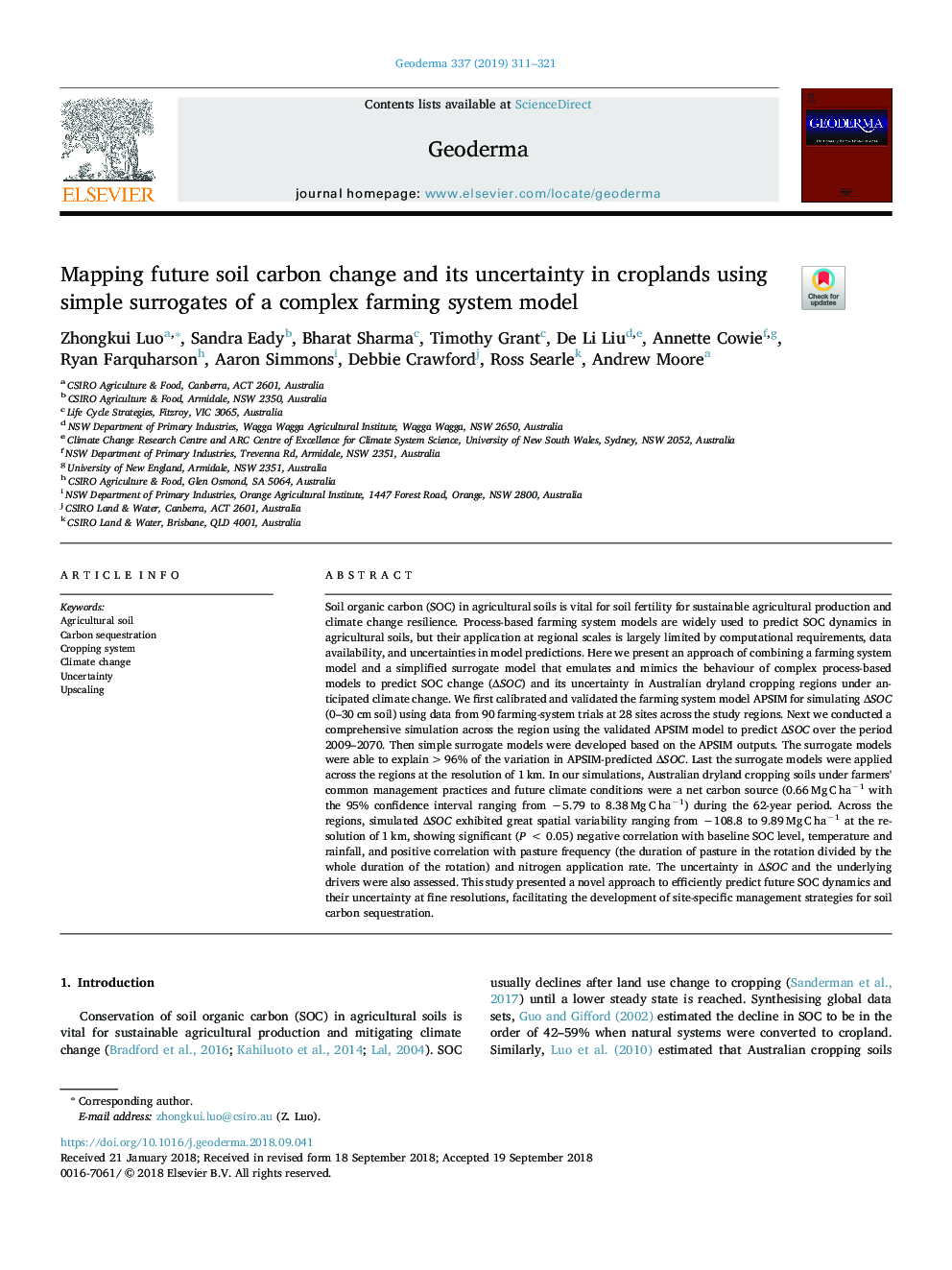| Article ID | Journal | Published Year | Pages | File Type |
|---|---|---|---|---|
| 11024784 | Geoderma | 2019 | 11 Pages |
Abstract
Soil organic carbon (SOC) in agricultural soils is vital for soil fertility for sustainable agricultural production and climate change resilience. Process-based farming system models are widely used to predict SOC dynamics in agricultural soils, but their application at regional scales is largely limited by computational requirements, data availability, and uncertainties in model predictions. Here we present an approach of combining a farming system model and a simplified surrogate model that emulates and mimics the behaviour of complex process-based models to predict SOC change (âSOC) and its uncertainty in Australian dryland cropping regions under anticipated climate change. We first calibrated and validated the farming system model APSIM for simulating âSOC (0-30â¯cm soil) using data from 90 farming-system trials at 28 sites across the study regions. Next we conducted a comprehensive simulation across the region using the validated APSIM model to predict âSOC over the period 2009-2070. Then simple surrogate models were developed based on the APSIM outputs. The surrogate models were able to explain >96% of the variation in APSIM-predicted âSOC. Last the surrogate models were applied across the regions at the resolution of 1â¯km. In our simulations, Australian dryland cropping soils under farmers' common management practices and future climate conditions were a net carbon source (0.66â¯Mgâ¯Câ¯haâ1 with the 95% confidence interval ranging from â5.79 to 8.38â¯Mgâ¯Câ¯haâ1) during the 62-year period. Across the regions, simulated âSOC exhibited great spatial variability ranging from â108.8 to 9.89â¯Mgâ¯Câ¯haâ1 at the resolution of 1â¯km, showing significant (Pâ¯<â¯0.05) negative correlation with baseline SOC level, temperature and rainfall, and positive correlation with pasture frequency (the duration of pasture in the rotation divided by the whole duration of the rotation) and nitrogen application rate. The uncertainty in âSOC and the underlying drivers were also assessed. This study presented a novel approach to efficiently predict future SOC dynamics and their uncertainty at fine resolutions, facilitating the development of site-specific management strategies for soil carbon sequestration.
Related Topics
Physical Sciences and Engineering
Earth and Planetary Sciences
Earth-Surface Processes
Authors
Zhongkui Luo, Sandra Eady, Bharat Sharma, Timothy Grant, De Li Liu, Annette Cowie, Ryan Farquharson, Aaron Simmons, Debbie Crawford, Ross Searle, Andrew Moore,
